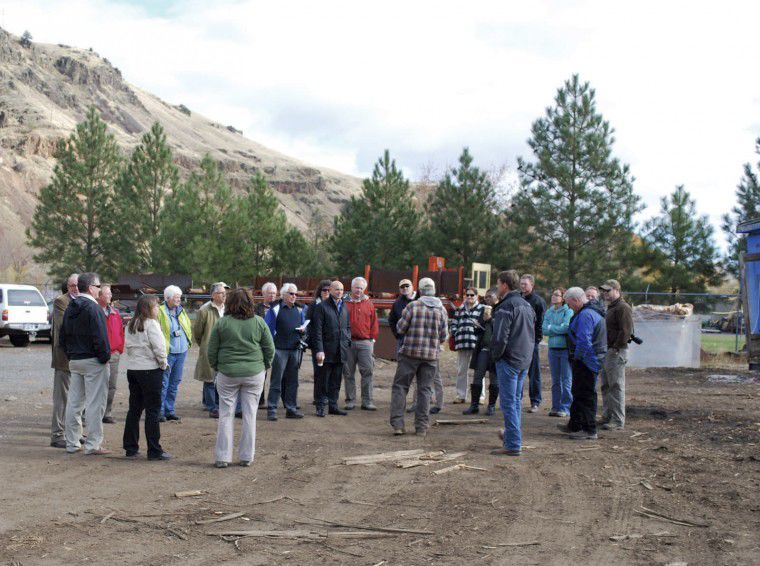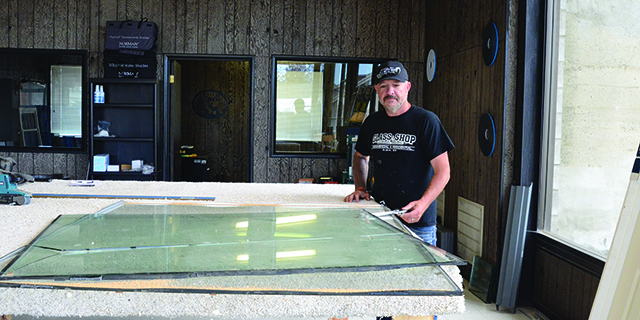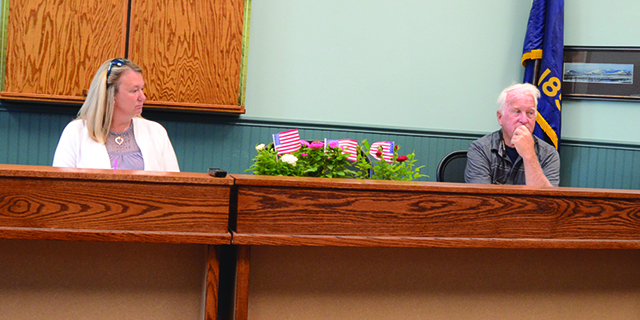County shares renewable energy ideas with world
Published 4:00 pm Tuesday, November 8, 2011

- <p>A group of local, state, federal and international experts in rural development and renewable energy tour the Intergrated Biomass Energy Center in Wallowa.</p>
“Using the natural resources we have right here – sun, water, and biomass – we can create jobs, and support our small businesses, ranches and municipalities,” said Nils Christoffersen, executive director of local non-profit Wallowa Resources.
A tour of renewable energy and economic development in Wallowa County drew an international crowd Oct. 31, attracting visitors from as far away as Italy, France and New Zealand. Representatives from the 34-member nation Organization for Economic Cooperation and Development (OECD) joined government and agency officials for a tour of renewable energy projects in the county.
Trending
“I think we made a good impression on the people who visited here and they went away with the idea that smaller-scale projects have a place in renewable energy development and in economic development in rural areas,” said Wallowa County commissioner Mike Hayward. “There is the opportunity to do more of this in the county; especially in hydroelectric and biomass. It is potentially a significant growth industry not only in Wallowa County but also throughout northeast Oregon.”
The OECD and USDA have partnered to carry out a study on the economic impacts of the renewable energy industry in rural areas. Wallowa County was one of 10 sites in the United States chosen for the study.
“We’re here to tour the renewable energy projects in Wallowa County because you guys do it better than anyone else,” said USDA Rural Development Oregon State Director Vicki Walker. “The international group is going to all locations to see what they can replicate in their own communities.”
OECD project lead Raffaele Trapasso, of Italy, spoke during the tour about the increasing need to develop better policies to guide the renewable energy industry.
“Two or three years ago, renewable energy was like a gold rush. But, now there is less gold. We can no longer rely upon buying incentives. We now need a place-based approach in rural communities to bring about better policy,” Trapasso said.
“The Wallowa County study is looking at the overall economic impact of multiple, small-scale energy projects,” explained USDA Rural Development spokeswoman Jill Rees. “In addition, USDA Rural Development suggested the group examine the work in Wallowa County in no small part because of the innovative, collaborative, and place-appropriate work done locally by Wallowa Resources.”
Trending
Wallowa Resources was created in 1996, as Wallowa County government recognized the need for economic development after the demise of the local timber industry, according to Hayward.
“In 1976, there were three sawmills operating two shifts each and employing about 200 people in the county with more people working in the woods,” Hayward told the group. He said that the closure of the three sawmills came about in the 1990s as a result of changes in federal land management policy.
“At that time, the county decided to get more engaged. Wallowa Resources was created as the entity to lead the county in a whole host of things including education and economic development,” Hayward said.
“Opportunities in renewable energy contribute directly to our mission,” said Christoffersen, who has been hard at work developing biomass and micro-hydro projects in the area.
Today, Wallowa Resources has built a network of agency and organizational contacts that help with incentive programs and sources of funding for economic development and renewable energy projects in the county. “Wallowa Resources works with the Energy Trust of Oregon, the Oregon Department of Energy, local officials, LCDC, Farm Services, the USDA, private lenders, government officials and others in a collaborative effort,” Walker said.
Along the tour, the group visited one of the largest renewable energy projects in the county at the Integrated Biomass Resources (IBR) woody biomass plant in Wallowa. IBR’s main focus is on turning low-value forest materials, once burned in slash piles or left in the forest, into value-added products such as pressed fire logs and bundled firewood.
IBR has outgrown its current location at what Hayward refers to as “the business incubator” site in Wallowa and is in negotiations with private landowners and the county to move to the old Wallowa Wood Products mill site. The county is trying to purchase the property and then enter into a lease-to-own agreement with IBR. The plant currently employs 15 and is projecting growth in the industry and the ability to eventually employ up to 30 people.
The next stop on the tour was at Vern Spaur’s small machine shop and auto repair business in rural Wallowa to learn about his 10 kW micro-hydroelectric generator. Spaur navigated the hydroelectric permitting process with help from Wynne Auld, renewable energy project manager for Wallowa Resources’ for-profit arm Community Solutions, Inc.
“If it weren’t for Wynne, we wouldn’t be standing here talking,” Spaur told the visitors. Spaur pipes water from the mountains above his property to spin a small Pelton wheel to produce electricity. The hydroelectric generator increases the business’s bottom line and enables him to make such investments as increasing the firm’s work force, Spaur said. The generator is capable of cutting Spaur’s electricity costs by about $5,500 per year, said Auld.
“Here in Wallowa County, it’s small-scale,” Hayward said. “But, these local projects might be what keeps a business (or ranch) viable.”
The tour also demonstrated institutional uses of biomass in the county with a stop at the Enterprise School biomass boiler room and City of Joseph’s new solar energy system.
The school’s new high-efficiency boiler system burns low-value wood chips to heat the school. The school also put in a modern, high-efficiency lighting system at the same time, but the school’s boiler does not produce any electricity – only heat. After crossing several hurdles during the past several years, the biomass boiler at the Enterprise School has resulted in significant cost savings, with actual savings exceeding $75,000 per year in heating and energy costs for the school district, according to Christoffersen.
The tour ended at the Joseph sewer treatment plant to view a new solar array system designed by the Enterprise-based company Sun Storage. The 100 kW system is used to power the sewage treatment plant. The new solar array system went on-line in an official switch-flipping ceremony only four days after the tour.
USDA Oregon State Director for Rural Development Vicki Walker, Dan Carol, multi-state initiatives director for Governor John Kitzhaber, and Senator Ron Wyden’s eastern Oregon field representative Kathleen Cathey were among those participating in the tour.









